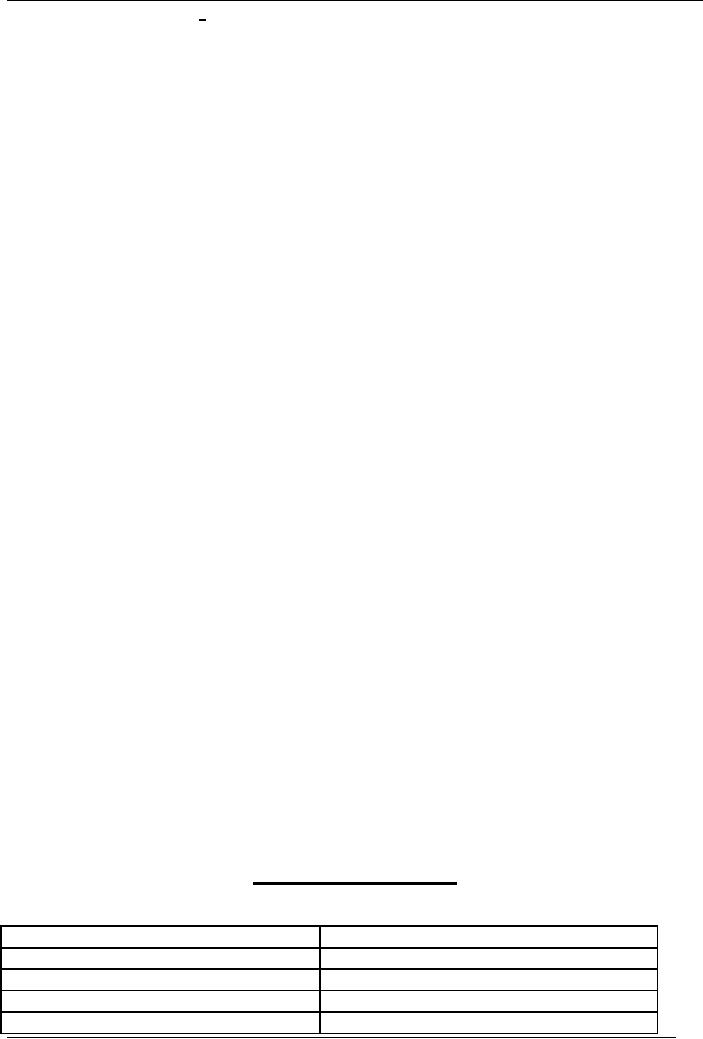 |

Advertising
and Promotion (MKT621)
VU
Lesson
4
ADVERTISING
AND SOCIETY
LECTURE
OVERVIEW
This
lecture will identify the
relationship and effect of advertising on
Society. We will also
delve
upon the impact of
advertising on various segments of
society like women, children
etc.
We
will also explain about ethics in
advertising, code of ethics and
the role of advertising as
a
marketing
tool and related marketing
process.
ADVERTISING
AND SOCIETY
The
benefits of Advertising Immediate
1.
Numerous
material & human resources
are devoted to
advertising.
2.
Practically
everywhere.
3.
No
one can escape influence of
Advertising.
4.
Has
potential for good but
depends upon the
realization.
PRACTICAL
BENEFITS
Economic
Benefits: Generation
of new jobs Higher
Incomes, comfortable & humane
way of
living.
Political
benefits: Significant
contribution for informing people
about candidates & the
party
etc.
Cultural
Benefits: Contributes
positively in decisions about media
content for betterment
in
society
Moral
& Religious Benefits: faith
messages etc.
IMPACT
OF ADVERTISEMENTS ON CHILDREN
Children
are impressionable so: advertiser
should ----
�
Take
into account knowledge &
maturity level of target
audience
�
Not
exploit imaginative quality of
children.
�
Communicate
information accurately &
truthfully.
�
Use
advertising to influence social
behavior in a positive
way.
�
Contribute
to parent - child relationship in a
constructive way.
IMPACT
OF ADVERTISEMENTS ON WOMEN
She
is at the centre of all
advertisements in almost all
media. Woman is an embodiment
of
tradition
& practically no ad is complete if
emotional appeal is underscored
without a woman
as
she plays a pivotal role in
the family.
Woman
is used to grab attention and
stimulate
desire
which advertiser wants to
transform to product.
ETHICS
IN ADVERTISING
Why
Ethics?
PUFFERY
Exaggerated, fantastical or impossible
claims. e.g. a cosmetic ad.
says
"There
are only 3 steps between
you and the beauty."
SHOCK
ADS. Trying to captivate audience
by shocking message e.g.
"Death
cigarettes".
7

Advertising
and Promotion (MKT621)
VU
WEASEL
CLAIM Where a probable claim is
shown e.g. "probably the
best show of
the
year." Here word `probably'
is weasel. Or e.g. ABC medicine "helps"
stop gas
before
it starts" here the word
`help' is weasel.
CODE
OF ETHICS IN ADVERTISING
�
Advertisements
will not offend morality,
decency and religious views /
beliefs of the
viewers.
�
Should
not be directed towards any
religious or political
end.
�
Should
not endanger safety of children or
create in them any interest
in unhealthy
practices.
�
Indecent,
vulgar, suggestive, repulsive or
offensive treatment of themes shall
be
avoided.
ADVERTISING
A MARKETING TOOL
MARKETING
CONCEPTS
Exchange:
Core
concept of marketing Means
the exchange of a product
between the seller
&
the
buyer.
Transaction:
When
an agreement is reached between two
parties, a transaction takes
place.
Needs,
Wants & Demands: Important
for marketer to understand and
interpret these of
the
target
market.
�
Need
is a basic human
necessity
�
When
need is specific, it is
want.
�
A
want for specific product
supported by an ability to pay is
demand.
Value:
Always remember the
statement "Value
for money"
Basic
Equation
Value
= Benefit / Cost
Marketplace
& Market space:
Marketplace
is Physical like a store and Market
space is digital like
internet.
Marketing
Process:
Four
major stages:
�
The
marketing environment
analysis
�
The
target market & positioning
process
�
Marketing
Mix decisions
�
Ultimate
consumer
MARKETING
PROCESS
4
P's VS 4 C's
FOUR
P's
FOUR
C's
PRODUCT
CUSTOMER
SOLUTION
PRICE
CUSTOMER
COST
PHYSICAL
DISTRIBUTION
CONVENIENCE
PROMOTION
COMMUNICATION
8

Advertising
and Promotion (MKT621)
VU
In
fact following questions
would need to be answered.
�
Where
& whom to sell
broadly?
�
How
to select homogenous groups of
customers?
�
How
to differentiate the brand
from many others in the
market?
This
helps marketer in making
critical decisions for competing in
market. Such decisions
are
"Marketing
Mix Decisions" broadly known as 4
P's as above but have now
expanded to 7 P's
such
as:
1.
Product
2.
Price
3.
Physical
Distribution
4.
Promotions
5.
Packaging
6.
People
7.
Process
9
Table of Contents:
- INTRODUCTION TO ADVERTISING:Its growing importance, Explanation of Personal and non-personal selling
- INTRODUCTION TO ADVERTISING:ADVANTAGES, Communication, Information, Various Media
- INTRODUCTION TO ADVERTISING:FUNCTIONS OF ADVERTISING, IMPACT OF ADVERTISING
- ADVERTISING AND SOCIETY:PRACTICAL BENEFITS, ETHICS IN ADVERTISING, Marketplace & Market space
- MARKETING TOOLS:COMPONENTS OF MARKETING MIX, PRODUCT LIFE CYCLE (PLC) CURVE
- MARKETING TOOLS:SWOT Analysis, Contents & Structure, ROLE & FUNCTION OF ADVERTISING
- ROLE AND FUNCTIONS OF ADVERTISING:Structure of an Advertising Agency, How to Select an Advertising Agency
- ADVERTISING PLANNING:ADVERTISING OBJECTIVES, Types of Advertising, Positioning Strategies
- POSITIONING:BRANDING, 7 Steps of Creative Process, UNIVERSAL ADVERTISING STANDARDS
- ADVERTISING MESSAGE:Message Content, BASIC TERMS & CONCEPTS
- ADVERTISING BUDGET:4 Methods to determine, ADVERTISING RESEARCH, ADVERTISING RESEARCH
- ADVERTISING REACH:BROAD COMMUNICATION OBJECTIVES, ADVERTISING COPY METHODS, MEDIA RESEARCH
- PRE – PLACEMENT EVALUATION:ACCOUNT PLANNING, MARKET, COMPETITION
- WORKING OF ADVERTISING:12 Steps to develop effective campaign, SOURCE or THE ADVERTISER
- ADVERTISING RESPONSE HIERARCHY MODELS:AIDA MODEL, PROCESS REQUIRED TO GET BIG IDEA
- PROBLEM SOLVING STRATEGIES:Procedure to Handle Problems, In brief, Eight principles apply to consumer behavior
- CONSUMER BEHAVIOUR:ADVERTISING APEALS, MEDIA MIX DECISIONS, Target Rating Point (TRP)
- CREATIVITY IN ADVERTISING:Three aspects are most accepted, Four Rules of Creativity
- COPY WRITER:CHARACTERISTICS OF COPYWRITER, IMPORTANCE OF LANGUAGE
- WHY ADVERTISING:Advertising & Market Education, ADVERTISEMENT CAMPAIGNS
- METHODS TO APPRECIATE A PROBLEM:SPONSORSHIP—an important tool, Special Characteristics
- IMPORTANT TOOL OF ADVERTISING:TELEVISION ADVERTISING, TRANSIT ADVERTISING
- ONLINE ADVERTISING:Banners, Logos, Email Ads, Keywords on Search Engines, New Developments
- ONLINE ADVERTISING:Structural Challenges, Adobe Photoshop, JAVA, HTML, DHTML, ASP & JSP
- SALES PROMOTION:Consumer Oriented Promotion, HOW TO USE TRADE PROMOTION, Dealing with the Trade
- PUBLICITY:PERSONAL SELLING, ROLE OF SALES PERSON, FUTURE OF GLOBAL ADVERTISING
- MARKETING ENVIRONMENT:Competitors, The Target Buyer, Segmenting your Market, FUTURE OF MARKET GROWTH
- MARKETING PLAN:Situational Analysis, Macro – Environment Situation, Marketing Objectives, Financial Objectives
- MARKETING PLAN:PROMOTING BUSINESS IN LOW COST, SUPPLY CHAIN, BUYER IDENTIFICATION
- HOW TO BE GOOD CLIENTS:CHANNEL BUYERS, HOW TO BE GOOD CLIENTS 14 RULES
- CLIENT – AGENCY RELATIONSHIP:HOW TO KEEP CLIENTS (10 Ways), Three Points for Consideration
- CLIENT – AGENCY RELATIONSHIP:ADVERTISING WITHOUT AN AGENCY, LOGO AND CORPORATE IDENTITY
- NEWSPAPER ADVERTISING:AD PRODUCTION,TYPES OF NEWSPAPER ADS, CIRCULATION
- OTHER ADVERTISING MEDIUM:HOW TO USE MAGAZINES, HOW TO USE RADIO, Daypart buying options
- UTILITY OF VARIOUS MEDIA:TAPE OR FILM, UTILITY OF TV, DIRECT MAIL PACKAGE
- OTHER ADVERTISING MEDIA:POINT OF PURCHASE (POP), TRANSIT ADVERTISING, LIMITS OF ADVERTISING
- CONTINUOUS TRACKING:PLANNING CAMPAIGN, HOW TO UNDERSTAND ADS, ASK BASIC QUESTIONS
- SEASONAL ADVERTISING:MAXIMIZING IMPACT, THE WEB ADVERTISING, MEASURING ADVERTISING
- COMPONENTS OF ADVERTISING:BUY - OLOGY OF MIND, BUY - OLOGY OF MIND
- CRITICISM ON ADVERTISING:SHOULD ADVERTISING BE ABOLISHED,
- EFFECT OF ADVERTISING:HOW TO PROMPT AWARENESS, CREATING DESIGN THAT SELLS
- CREATING EFFECTIVE DESIGN:LANGUAGE OF TYPOGRAPHY, HEADLINES THAT COMMUNICATE
- WORKSHEETS:DEMOGRAPHICS OF YOUR TARGET, YOUR COMPETITOR
- GLOSSARY OF ADVERTISING:ACCOUNT EXECUTIVE, PROOF, VOICE OVER
- CONCEPT OF AN AD:HOW TO DEVELOP A CONCEPT OF AN AD